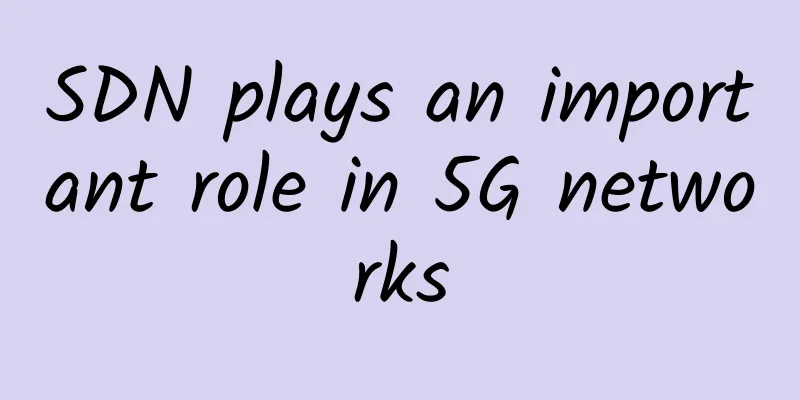A Complete Analysis of IPv6 Transition Technology

|
The IPv6 wave is coming With the rapid development of emerging industries such as mobile Internet, Internet of Things, and Industry 4.0, the number of terminals connected to the network is growing exponentially. From traditional PCs and mobile phones to the ubiquitous Internet of Things terminals in the future, all need to access the Internet through IP addresses. It is estimated that by 2020, there will be 50 billion devices online worldwide, and the number of addresses required is more than ten times the total number of IPv4 addresses. At present, all IPv4 addresses have been allocated, and the problem of address shortage is very serious.
After more than 20 years of development, IPv6 has become a very mature technology. With more addresses, smaller routing tables, better security and other advantages, IPv6 can effectively solve the problems currently faced by IPv4. On November 26, 2017, the General Office of the CPC Central Committee and the General Office of the State Council jointly issued the Action Plan for Promoting Large-Scale Deployment of Internet Protocol Version 6 (IPv6) (hereinafter referred to as the Action Plan). The Action Plan requires that within 5 to 10 years, an independent technology system and industrial ecology for the next generation Internet will be formed, the world's largest IPv6 commercial application network will be built, the next generation Internet will be deeply integrated and applied in various fields of the economy and society, and it will become an important leading force in the development of the next generation Internet in the world. The wave of IPv6 has truly arrived. Introduction to IPv6 Transition Technology Since IPv6 itself is not compatible with IPv4, large-scale deployment of IPv6 still faces many challenges. The currently feasible solution is to use transition technology to gradually evolve IPv4 to IPv6. There are currently three main transition technologies: 1. Two-wire technology Dual stack diagram Dual stack technology refers to the simultaneous running of IPv4 and IPv6 protocol stacks between various terminal application systems, operation support systems and network nodes (both have the same hardware platform), thereby achieving information exchange with IPv4 or IPv6 nodes respectively. Nodes with IPv4/IPv6 dual protocol stacks are called dual stack nodes. These nodes can send and receive both IPv4 and IPv6 packets. They can use IPv4 to communicate with IPv4 nodes, or directly use IPv6 to communicate with IPv6 nodes. Dual stack nodes contain both IPv4 and IPv6 network layers, but the use of transport layer protocols (such as TCP and UDP) is still single. Dual stack protocol model Dual-stack nodes can run in the following three modes, flexibly enabling/disabling IPv4/IPv6 functions:
The working principle of the dual stack mode can be simply described as:
Dual stack technology is the basis of all transition technologies. It supports flexible activation or deactivation of the IPv4/IPv6 functions of nodes and can effectively transition to a pure IPv6 environment. However, it requires all nodes to support dual stack, which increases the difficulty of transformation and deployment. 2. Tunnel technology Tunnel technology diagram The tunnel technology based on IPv4 tunnel to transmit IPv6 data packets is to encapsulate IPv6 packets in IPv4 packets, so that IPv6 protocol packets can communicate across IPv4 networks. Therefore, isolated IPv6 networks can communicate with each other through IPv6 tunnel technology using existing IPv4 networks without making any modifications or upgrades to the existing IPv4 networks. IPv6 tunnels can be configured between border routers or between border routers and hosts, but the nodes at both ends of the tunnel must support both IPv4 and IPv6 protocol stacks. Encapsulation of IPv6 Datagrams in IPv4 Implementation mechanism of IPv4/IPv6 tunnel technology:
Tunnel technology packaging diagram IPv6 tunnel technology is divided into manual tunnel and automatic tunnel: (1) Manual tunnel: The border device cannot automatically obtain the IPv4 address of the tunnel endpoint. The IPv4 address of the tunnel endpoint needs to be manually configured so that the message can be correctly sent to the tunnel endpoint. It is usually used for tunnels between routers. Common manual tunnel technologies are as follows:
(2) Automatic tunnel: The border device can automatically obtain the IPv4 address of the tunnel endpoint, so there is no need to manually configure the IPv4 address of the endpoint. The general practice is that the IPv6 addresses of the two interfaces of the tunnel use a special IPv6 address format with an embedded IPv4 address. In this way, the routing device can extract the IPv4 address from the destination IPv6 address in the IPv6 message. Automatic tunnels can be used between hosts or between hosts and routers. Common automatic tunnel technologies are as follows:
Through tunnel technology, relying on existing IPv4 facilities, it is possible to achieve intercommunication between multiple isolated IPv6 networks by only requiring the devices at both ends of the tunnel to support dual stacks. However, the tunnel implementation configuration is relatively complex and does not support direct communication between IPv4 hosts and IPv6 hosts. Address Protocol Translation Technology Address translation technology diagram 1. NAT-PT conversion technology NAT-PT (Network Address Translation-Protocol Translation): It is a combination and evolution of SIIT (Stateless IP/ICMP Translation) protocol conversion technology and dynamic address translation (NAT) technology. SIIT provides one-to-one mapping conversion between IPv4 and IPv6. NAT-PT supports many-to-one or many-to-many address conversion based on SIIT. NAT-PT has two forms: static and dynamic. (1) Static NAT-PT: Static mode provides one-to-one mapping of IPv6 addresses and IPv4 addresses. For nodes in the IPv6 single-protocol network domain to access each IPv4 address in the IPv4 single-protocol network domain, they must be configured in the NAT-PT gateway. Each destination IPv4 is mapped to an IPv6 address with a predefined NAT-PT prefix in the NAT-PT gateway. In this mode, each IPv6 mapping to an IPv4 address requires a source IPv4 address. Static configuration is suitable for hosts that are often online or need to provide a stable connection. (2) Dynamic NAT-PT: In dynamic NAT-PT, the NAT-PT gateway announces a 96-bit address prefix to the IPv6 network, and combines it with the host's 32-bit IPv4 address as an identifier for the host in the IPv4 network. The destination address prefix of the message sent from the host in the IPv6 network to the IPv4 network is the same as the address prefix announced by NAT-PT. These messages are routed to the NAT-PT gateway, which modifies the message header, extracts the IPv4 address information, and replaces the destination address. At the same time, the NAT-PT gateway defines an IPv4 address pool, and it takes an address from the address pool to replace the source address of the IPv6 message, thereby completing the conversion from the IPv6 address to the IPv4 address. Dynamic NAT-PT supports mapping multiple IPv6 addresses to one IPv4 address, saving IPv4 address space. NAT-PT supports mutual translation and conversion between IPv4 and IPv6 protocols, but has the following problems:
Therefore, NAT-PT is gradually being abandoned and is not recommended. The latest address protocol translation technology is NAT64. 2. NAT64 conversion technology NAT64 is a stateful network address and protocol translation technology that generally only supports users on the IPv6 network initiating connections to access IPv4 network resources. However, NAT64 also supports manually configuring static mapping relationships to enable the IPv4 network to actively initiate connections to access the IPv6 network. Among them, NAT64 performs IPv4-IPv6 stateful address and protocol translation, and DNS64 implements domain name address resolution. The two work together and do not require any modifications on the IPv6 client or IPv4 server. DNS64 mainly synthesizes the A record (IPv4 address) in the DNS query information into the AAAA record (IPv6 address), and returns the synthesized AAAA record user to the IPv6 side user. DNS64 also solves the defects of DNS-ALG in NAT-PT. NAT64 and DNS64 flow chart The process of NAT64 and DNS64 is as follows:
Address protocol translation technology can achieve external support for IPv6 access by making a small modification to the existing IPv4 environment (usually replacing the egress gateway), and the deployment is simple and convenient. 3. How to choose? The business system has high requirements for stability, and any transformation must not affect the operation of existing business. When we are doing IPv6 upgrades, we need to consider many factors when choosing among many technical solutions:
4. Comparison of three technologies Each transition technology has its own advantages and disadvantages. Considering the application scenarios and needs of the financial industry, we need to choose different transition technologies to achieve IPv6 transformation in different scenarios:
|
<<: Juniper Networks AE Natarajan: Building a collaborative, connected, and secure networked world
>>: 5G bearer network operation is difficult, but machine learning technology can solve it
Recommend
Ruijie Smart Classroom: Assisting practical classrooms and training great craftsmen
Compared with traditional classrooms, vocational ...
Yecao Cloud Labor Day Promotion: Hong Kong BGP line VPS special price from 88 yuan per year, Hong Kong dedicated server from 199 yuan/month
Yecaoyun has already started the Labor Day promot...
There are so many network structures, this one is probably the most controversial one
Since its birth in the 1960s, network technology ...
Xunlei's total revenue in 2016 was US$157 million, and its cloud computing revenue increased by 230.4% year-on-year
On March 8, Beijing time, Xunlei released its una...
Huawei Cloud: Enterprise-level cloud host 2C4G5M 707 yuan/year
Huawei Cloud's various activities are also on...
Will Wi-Fi cost more than 5G connections?
This seems to subvert common sense! Recently, Eri...
Hosteons: $7/month VDS-Ryzen7950x/4GB/25GB NVMe/15TB@10Gbps/Salt Lake City Data Center
Hosteons tested the Hybrid Servers (VDS) product ...
5G phones have been available for three years. Why is 5G in the United States so slow? Three major problems remain unsolved
Since the advent of 5G technology, U.S. wireless ...
5G has no presence? Wrong! It has already "bloomed in many places"
5G has been commercially used in my country for a...
Small functions of wireless routers make your Wi-Fi more useful
Have you just bought a wireless router and you ju...
The intelligent world is waiting for you to build. Huawei Cloud joins hands with millions of developers to Login 2020
What does an intelligent world where everything i...
10 ways to deal with data center outages
While data centers are designed to not fail in th...
Easy-to-understand illustrated network knowledge - Part 2
Continuing from the previous article "Easy...
6G Proposal: Entering a new stage and meeting new challenges
At the 44th meeting of the ITU-R WP5D, the ITU co...
Facebook launches new AI project to learn from videos
On March 30, according to foreign media reports, ...









